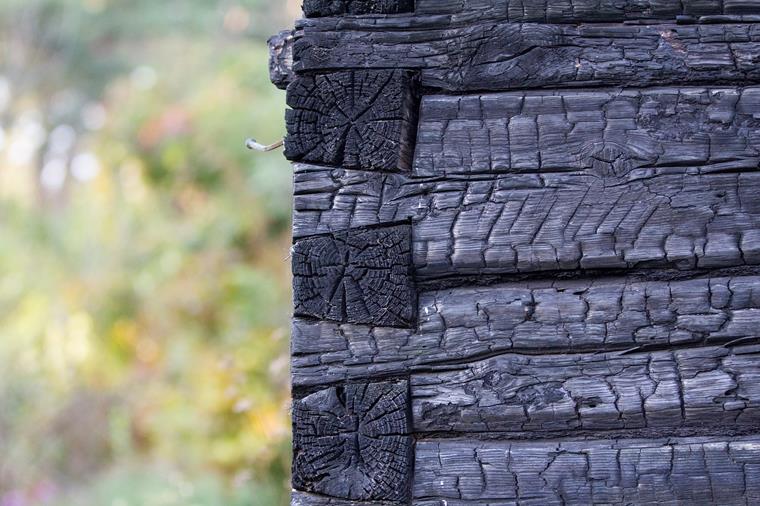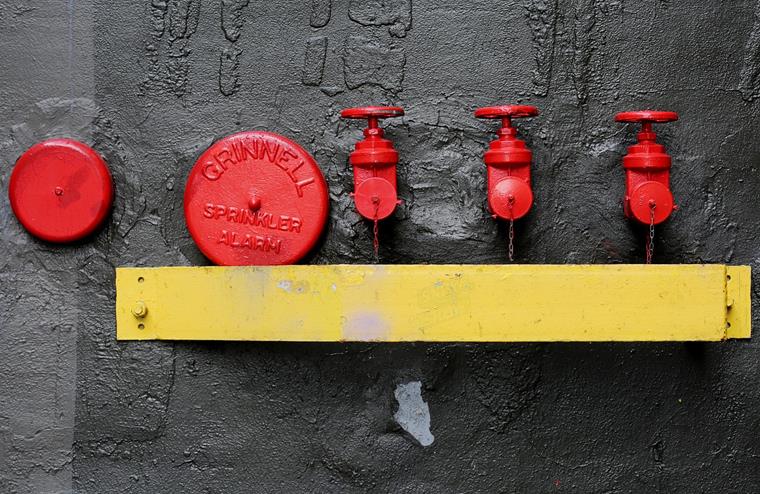The strict fire protection in Germany is often ridiculed. How devastating a fire can be is shown by the example of Düsseldorf Airport, which we talked about in an earlier episode. Last but not least, this event has had a lasting impact on the strict regulations. Even restaurants have to close if they fail to meet the requirements. Above all, we have one question for fire protection expert Reinhard Eberl-Pacan: Does the fire protection really have to be that strict?
Who is Reinhard Eberl-Pacan?
The trained journalist studied architecture in Berlin, Germany. The goal: To learn something meaningful that he could end up writing about with in-depth knowledge. At least that was the plan. The negative order situation around 2004/2005 forced him to specialize, but in which direction? After A for architecture, he decided on B for fire protection – an area that was a little different and, above all, more versatile than he would have thought.
He began to be interested in sustainable building relatively quickly. As early as 2004, it was clear to many that concrete structures use so-called gray energy that cannot be recovered. It just got lost. He found his subject: Not much is built with timber, even though it is sustainable. Why? Mostly because of fire protection. On one hand, it should be built sustainably; on the other hand, it must be safe in the long term, of course. How can that be achieved?
Prevention as Golden Rule
What is the difference to "normal" fire protection? Our guest makes it short: Preventive fire protection ensures that, at best, it does not even burn. Defensive fire protection intervenes when there is a fire.
We hardly notice many preventive measures in everyday life. The thickness of the walls ensuring they can withstand the fire for 90 minutes in case of doubt, a staircase as a smoke-free escape route in an emergency – structural fire protection has important tasks here. Fire alarm systems, such as smoke detectors or sprinkler systems, are part of the technological fire protection, of course.
Another important area is organizational fire protection. Fire protection officers take care of protection in hospitals, schools, meeting places, and other special structures. Everyone surely remembers the fire protection drills in their school, often once or several times a year.
Fire Protection as Matter of Country
The building code is the supreme law and the building law is state law. Up to 80 percent of the building regulations deal with the topic of fire protection. A collection of governmental regulations is derived from this, which deals with the special dangers of movie theaters, theaters, and exhibition halls, for example. The building code itself describes a "normal" building, such as residential buildings or offices. If there is a requirement for "non-flammable" material in the building code, timber naturally falls out of the way.
Depending on how dangerous the building is, it is classified into different building classes, from one to five. One is a single-family house and five is a typical Berlin apartment building. The larger and higher the building, the higher the requirements for the building class. Planning is unnecessarily complicated due to the different regulations, depending on the federal state. Not only are there 16 different building codes in Germany – they are also constantly changing. Are you planning a building for Baden-Württemberg in Berlin? Something like that quickly becomes a problem. Not only are the regulations different, they are also often named differently or are available where you would never suspect them.
In Bavaria, for example, the rescue window has been much smaller than in the other federal states for at least 50 years. It makes you wonder: Why? In Bavaria, they are simply not ready to change that. Every country has the right to decide for itself, and most of the time, there is more stubbornness than any sense behind these decisions.
How often do people die in fires in Germany?
Mr. Eberl-Pacan points out that Germany really does keep precise statistics for everything, but not for such things. Besides: It is also a matter of the federal state in this case. There are no such statistics in Brandenburg, but they exist in Berlin. Who is actually a fire dead? Someone who died in a fire or as a result of the long-term aftereffects? It is estimated that around 400 people die each year in fires in Germany. According to available statistics, there are measures, such as mandatory smoke detectors, that have already proven their worth. Seen internationally, Germany is at a good level with room for improvement.
Stricter Fire Protection ≠ More Safety
As with a chain, the weakest link is crucial in the fire protection. All requirements of the individual areas (structural, organizational, and technical fire protection) must be balanced. If a lot has been invested in non-flammable material, but no smoke detector is installed, that will do little for people in the event of a fire.
Fire resistance of at least 90 minutes costs a lot of money. A fire alarm, on the other hand, is cheap. If the fire is not noticed in time, the building will be on fire after just one hour. The additional 30 minutes don't matter. If the warning was successful, the residents left the building after 15 minutes and our fire departments are well-trained. Fires are usually under control within 30 minutes. So why these 90 minutes? Rather, it is better not to invest in building materials, but in warning systems.
Flammable Berlin?
According to statistics, fire protection is the lowest in Berlin. In comparison, the residential buildings there have the worst statistics. On the other hand, schools are very safe. Why is that so?
Our guest has no clear answer to this. Statistics should always be viewed with a certain amount of caution. Not all regions keep such statistics really well. Moreover, the buildings in Berlin are often old and there are also existing buildings. Historically, the number of defects is simply higher. If a fire breaks out in the basement, the old doors seldom withstand it, and there's smoke in the entire stairwell soon. There are often also older people living in such older houses and, statistically speaking, fires occur more often in these households.
Timber as Secret Weapon Against Fires
On the subject of timber structures and fire protection, Mr. Eberl‑Pacan goes back some way. In the Middle Ages, entire cities fell victim to major fires. The reason is: A lot of buildings were made of timber. So is timber bad for fire protection? After all, it's burning. During the Second World War, bombs also caused many roof fires that spread quickly. What is a roof structure made of? It's made of timber!
What many people simply do not know or do not consider: Timber burns, but it burns very predictably.
It's like a campfire. Throw in a large piece of wood and – nothing happens. At first, nothing burns, because wood always needs a so-called support fire. Explosions, for example, create a lot of heat, which means that the fire in the wood continues to ignite and the temperatures rise.
The most important factor here is the amount of material burned off; that is, what actually burns off over a certain period of time. The solution for timber structures is simple: Build in such a way that there is a static core to ensure that the building doesn't collapse in the event of a fire. A layer of sacrificial wood is placed around this core. This then burns out in 30, 60, or 90 minutes – without damaging the inner core. About a millimeter burns out in a minute. With 9 centimeters of sacrificial wood, the fire only reaches the core after 90 minutes. By then, the fire should be extinguished without any problems – the static core is still intact and thus stable.
Fire Protection for Concrete and Steel
Unfortunately, according to our guest, there is no predictability here. He elaborates on that for us. Concrete has a high fire resistance, like a broad back that it holds out to the flames. If the fire comes with all its might, it becomes so strong that the structure simply collapses. Higher temperatures and a longer fire duration cause concrete to break apart in a very uncontrolled manner. Of course, this can quickly become dangerous.
Steel, on the other hand, softens relatively quickly if it is not protected. Instead of retaining its shape, it rather deforms into a kind of abstract work of art that is everything, but no longer load-bearing. Timber, on the other hand, is a smart building material that helps itself. We can calculate exactly how long it will withstand the fire.
Future of Fire Protection: Early Detection and Early Response
We asked our guest how he sees the development of fire protection. We think he has a very well-thought-out answer to this. Technical developments in particular are of great potential. Unfortunately, as is so often the case, the construction industry missed the starting shot for further development. But there is hope. Mr. Eberl‑Pacan refers to gradient technologies . These are two clever minds that want to combine a smoke alarm device with a small extinguishing system. How does it work?
We currently equip buildings in such a way that fire is limited after it has already spread in an apartment. It would be much more sensible and resource-efficient not to let the fire develop in the first place. This is where the gradient technologies system comes into play.
A small built-in camera can use artificial intelligence to distinguish whether a small candle is burning somewhere or whether something might develop into a large fire. Fire only becomes dangerous when it spreads and there are high temperatures. If a small source of fire is automatically extinguished immediately, nothing else can happen. A very small amount of extinguishing agent is sufficient for this. But why has that not yet been implemented?
A great enemy of progress is unwillingness to agree. Where larger escape windows seem to be a real problem in Bavaria, such a system of early detection and early control would be difficult to implement at the federal level.
Then, there is the tiresome issue of bureaucracy. All the different rules will lead to nothing if their execution is not monitored properly. Here, the specialists would have to do it themselves, not the legislation. Mr. Eberl‑Pacan talks about the four-eyes principle, which he uses for fire protection in his projects.
- "I develop a fire protection concept with my two eyes and a testing engineer for fire protection; the other two eyes check the whole thing."
Maybe something like this might be just the right.
Mr. Eberl‑Pacan, what is your favorite building?
He mentions several buildings in different cities, most of them made of or built with timber. He explains his enthusiasm for timber structures, especially in city centers, as follows:
- "Not every building in the city has to have a timber facade. But when I have a building as an eye-catcher, with a timber facade that is alive and well and simply stands out from the others, you notice that timber structures are great. In the past, as an architect, I actually had nothing to do with timber structures, but thanks to fire protection and this occupation, I am an absolute timber engineer."
We absolutely agree with him: There is still a lot of potential dormant in timber structures. Therefore, we hope very much that more people in the construction industry will dare to plan and build with timber in the future. Thank you, Mr. Eberl‑Pacan, for being our guest!



